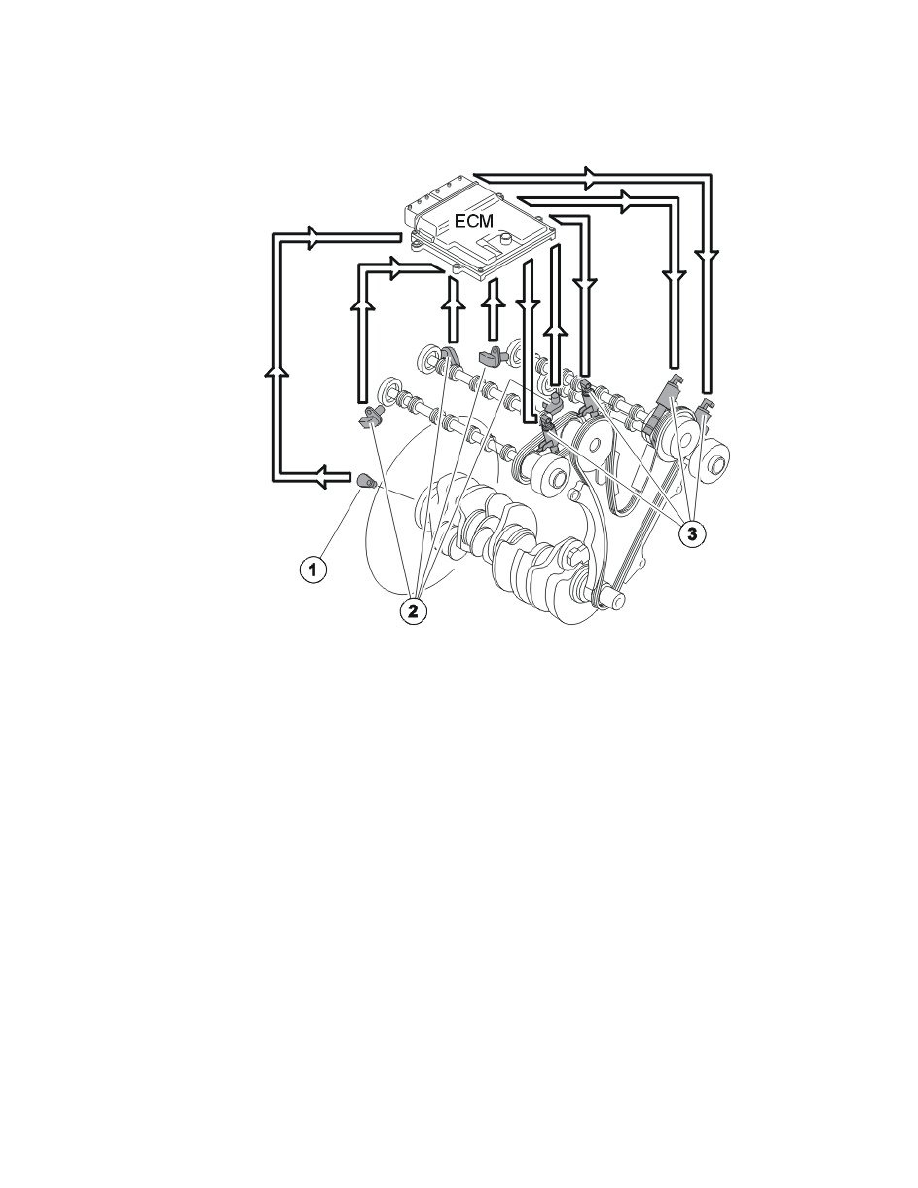XC90 AWD V8-4.4L VIN 85 B8444S (2005)

-
the gear selector is not in position "P" or "N" (automatic transmissions). The engine control module (ECM) receives a signal indicating the
position of the gear selector from the transmission control module (TCM) (4/28) via both the controller area network (CAN) and from a directly
connected cable between the engine control module (ECM) and transmission control module (TCM). Also see Design and Function, transmission
control module (TCM).
Camshaft control (CVVT)
Both intake camshafts and exhaust camshafts are regulated by the Engine Control Module (ECM). The intake camshafts are located in the middle of the
engine, while the exhaust camshafts are located furthest out. The camshafts are divided into two banks.
Bank 1 (front cylinder row); cylinders 1, 3, 5 and 7.
Bank 2 (rear cylinder row, closest to the passenger compartment); cylinders 2, 4, 6 and 8.
The inlet camshafts are driven primarily by the crankshaft and chain, whilst the exhaust camshafts are driven by a chain from the inlet camshafts.
When each camshaft is set at the factory, it is aligned with the position of the crankshaft. The position of the camshaft in relation to the crankshaft is
designated the camshaft 0 position (default setting). During camshaft control (CVVT) the camshaft 0-position is offset so that the cam timing changes.
The opening and closing of the intake and exhaust valves can be changed to match the camshaft. Engine performance can be increased, idle quality
increased and emissions reduced by regulating the camshaft timing changes.
The engine control module (ECM) detects the position of the camshafts by comparing the signals from the engine speed (RPM) sensor (1) (crankshaft
position) and the camshaft position (CMP) sensors (2) (camshaft positions). The engine control module (ECM) then controls the angle of the camshaft
by controlling the oil flow to the CVVT unit using the reset valve camshaft (3).
There are diagnostics for this function. See also: Camshaft diagnostics (CVVT) See: Powertrain Management/Computers and Control
Systems/Description and Operation/Camshaft Diagnostics (CVVT)
Controlling, reset valve camshaft
